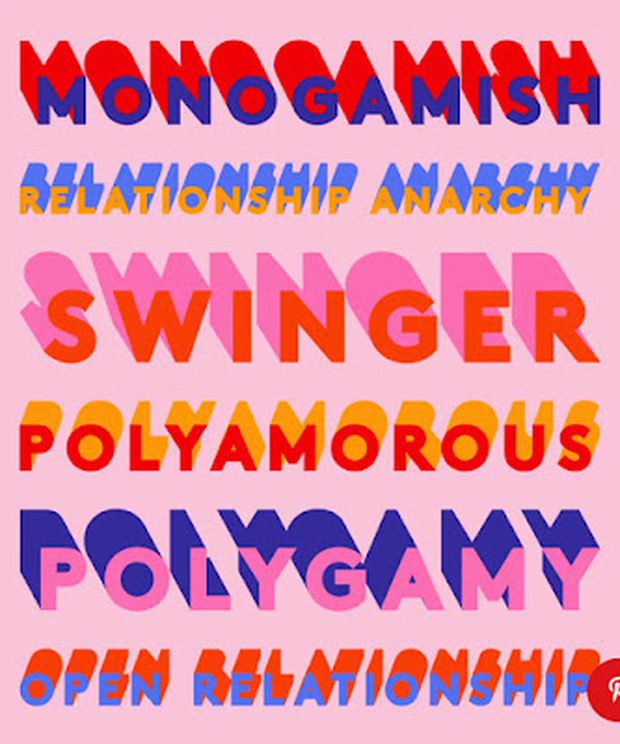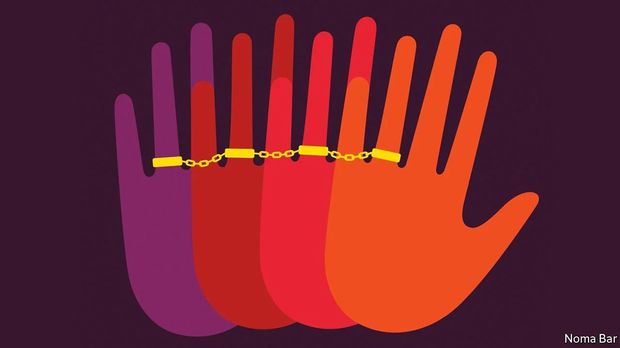Polygamy, which refers to the practice of having multiple spouses, has a long and complex history that varies widely by cultural and religious context. While polygamy is not as common as monogamy in many parts of the world, it has been practised by a wide range of cultures and religions throughout history.

The origins of polygamy are difficult to trace, as the practice predates written history and has been practised in a variety of forms across many different societies.
In some cases, polygamy may have arisen as a way to increase the size and strength of a family or community, as having multiple spouses could lead to a larger number of children and a more diverse group of allies. In other cases, polygamy may have been a way to consolidate power or wealth, as having multiple spouses could allow a person to acquire more property or resources.

Polygamy has been practised by many different cultures and religions, including ancient Egyptian, Greek, and Roman societies, as well as by some Native American, African, and Asian cultures.
In some cases, polygamy was seen as a sign of wealth or social status, while in other cases it was a way to provide for widows or to form alliances between families.
One of the most well-known forms of polygamy is Mormon polygamy, which was practised by members of The Church of Jesus Christ of Latter-day Saints (LDS Church) in the 19th century.
The LDS Church officially abandoned the practice of polygamy in 1890, but some splinter groups continue to practice polygamy today.
Polygamy continues to be practised in some parts of the world, particularly in countries with predominantly Muslim populations, where it is allowed under certain conditions.
However, polygamy is generally illegal in many countries, and it is often viewed as a form of gender-based discrimination and a threat to the institution of marriage.
In contrast, polyamory refers to the practice of having multiple romantic and/or sexual relationships with the knowledge and consent of all parties involved, is a relatively recent development in the history of human relationships.
While non-monogamy has existed in various forms throughout history, the term "polyamory" and the concept of consensual non-monogamy as a deliberate lifestyle choice is a relatively new phenomenon.
The origins of polyamory as a distinct concept can be traced back to the early 20th century, with the publication of books like "The Oneida Community: A Perfectionist Utopia" in 1972, which described the practices of a 19th-century utopian community in New York that practised complex marriage, a form of group marriage in which any member was considered married to any other who consented.
However, it was not until the 1990s that the term "polyamory" was coined and began to be widely used. The term "polyamory" combines the Greek word "poly," meaning "many," with the Latin word "amor," meaning "love." The term was first coined by Morning Glory Zell-Ravenheart, who used it to describe the practice of non-monogamy in her 1990 essay "A Bouquet of Lovers."
In the decades since the term "polyamory" was coined, the practice of consensual non-monogamy has become more visible and more widely accepted. While polyamory is still not as common as monogamy, it has gained a greater level of recognition and acceptance, with people practising polyamory in a variety of forms, including group marriages, triads, and other relationship structures.
What are the main differences between polyamory and polygamy?
Polyamory and polygamy are both forms of non-monogamy, but they have some important differences.
Polygamy refers to the practice of having multiple spouses, typically in a marriage context. It is most commonly associated with the Mormon and Muslim faith, in which a man can have multiple wives, but it is also practised in some other cultural and religious traditions.
Polygamy is typically hierarchical, with one person (always a man) having multiple spouses, but the spouses do not necessarily have other partners outside of the marriage.
Polyamory, on the other hand, refers to the practice of having multiple romantic and/or sexual relationships with the knowledge and consent of all parties involved.
Polyamory is based on honesty, communication, and consent principles and can take many forms. Some polyamorous relationships are hierarchical, with one person (or a group of people) considered the "primary" partner and others considered "secondary" or "tertiary" partners. Other polyamorous relationships are more egalitarian, with all partners having equal status and autonomy.
One key difference between polyamory and polygamy is that polyamory is centred on the idea of informed consent and agency, while polygamy is often based on a power imbalance and can involve coercion or lack of choice for some spouses.

Polyamory is also often characterised by a focus on open communication and negotiation, while polygamy can involve secrecy and a lack of transparency.
There can be some ways where polygamy and polyamory intersect together:
One way that polygamy and polyamory intersect is that some polygamous relationships may also be polyamorous. In these cases, the person with multiple spouses may also have other romantic and/or sexual relationships outside of the marriage, with the knowledge and consent of their spouses.
However, it is important to note that not all polygamous relationships are polyamorous, and not all polyamorous relationships involve polygamy.
Another way that polygamy and polyamory intersect is that both practices involve having multiple romantic and/or sexual relationships. However, as mentioned earlier, the two practices have different underlying principles and dynamics.
Polygamy is often based on a hierarchical structure and can involve power imbalances, while polyamory is centred on the idea of consensual non-monogamy and emphasises honesty, communication, and consent.
Why do so many people confuse polygamy with polyamory?
There are a few reasons why many people may confuse polygamy with polyamory.
First, both polygamy and polyamory involve having multiple romantic and/or sexual relationships, so it is easy to see how the two concepts could be conflated.
However, as mentioned earlier, the two practices have different underlying principles and dynamics.
Another reason for the confusion may be that polygamy is more widely known and discussed in mainstream media and culture, while polyamory is often less visible.
Polygamy has been the subject of television shows and news articles, while polyamory is often not as well-represented in mainstream media. As a result, people may be more familiar with the concept of polygamy and may not fully understand the differences between the two practices.
Additionally, the terms "polygamy" and "polyamory" are often used interchangeably, even in discussions within non-monogamy communities. This can further contribute to the confusion between the two practices.

It is important to recognise that polygamy and polyamory are distinct practices with their own unique characteristics and histories.
While they may have some similarities, it is important to understand the differences between the two and to respect the autonomy and agency of all individuals involved in non-monogamous relationships.
Why is polygamy illegal?
Polygamy, which refers to the practice of having multiple spouses, is illegal in many countries around the world. There are a few reasons why polygamy is generally considered illegal.
One reason is that polygamy is often seen as a form of gender-based discrimination. In many polygamous relationships, one person (usually a man) has multiple spouses, while the spouses do not necessarily have other partners outside of the marriage.
This can create a power imbalance and can lead to the exploitation or abuse of the spouses, particularly if they do not have the same rights or autonomy as the person with multiple spouses.
Another reason for the legality of polygamy is that it is often seen as a threat to the institution of marriage and to traditional gender roles. In many cultures, polygamy is seen as a challenge to the idea of monogamy and to the idea of the nuclear family.
As a result, polygamy is often perceived as a threat to social stability and to the traditional family structure.
Polygamy is also sometimes seen as a threat to women's rights and equality. In some polygamous relationships, women may have limited access to education, employment, and other opportunities, and they may not have the same rights as their husbands. This can create a cycle of poverty and disadvantage for women in polygamous relationships.
In conclusion, while polygamy is a longstanding practice in some cultural and religious traditions, it is generally considered illegal in many countries due to its potential negative impacts on gender equality, women's rights, and the institution of marriage.
CONCLUSION
The concept of consensual non-monogamy, or the practice of having multiple romantic and/or sexual relationships with the knowledge and consent of all involved, has a long history. However, the term "polyamory" and the idea of choosing polyamory as a distinct lifestyle is relatively recent.
It is important to understand the differences between polyamory and polygamy, as they have distinct characteristics and dynamics. While both practices involve multiple relationships, polyamory is based on the principle of consent and the belief in the ability to love more than one person at a time, while polygamy may be based on a hierarchical structure and can involve power imbalances.
It is crucial to respect the autonomy and agency of all individuals involved in non-monogamous relationships, regardless of the specific type of relationship they are engaged in.
